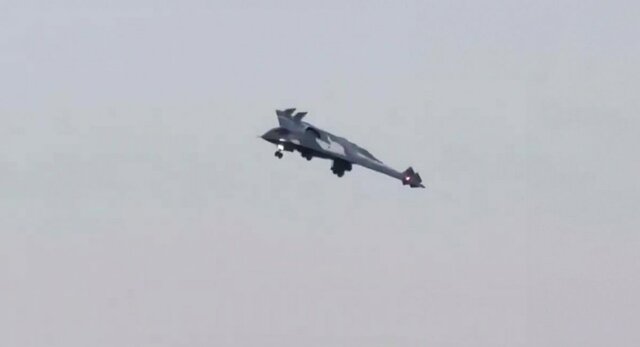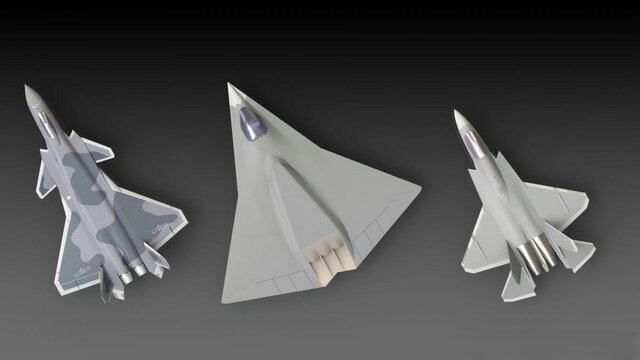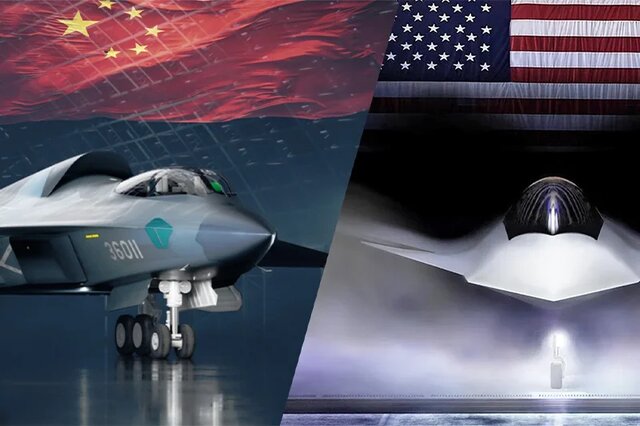Disclosure of new details of the sixth -generation fighter
Given the location of the Chengdu Aviation Industry Group in a city with a population of 5 million in China, more images of the Sixth Generation of the People’s Republic of China, the JH-XX fighter, are released and more detailed about this mysterious fighter are disclosed.
China is actively flying its new sixth generation fighters, one of which is the J-3 fighter, which has been observed recently after its initial unveiling in December.
In recent days, Chinese citizens have been able to shoot from the trial landing moment.
The reason for filming the Chinese citizens of the sixth generation fighter is its constructive position, the Chengdo Aviation Industry Group. The company is located in the city of Chengdu with a population of 5 million, the center of Sichuan province in southwestern China. So sometimes the experimental flights of this fighter are seen from residential areas and some succeed in filming it.
Following the release of the images, many media and military publications have begun writing their analysis of the Chinese G-1.
In the same vein, the Defense Express News agency, a military expert, wrote about the images released by the G-1: “These photos are not just spectacular, but allow us to examine details of the foreign secret weapon design of China. For example, these images showed that the G-2 uses a much rare jet design with three engines that are likely to have smooth nozzles. “The air entrance is below and another entrance at the top of the fighter, which is a relatively unusual solution.”
“The G-2 has a very powerful chassis with a nose base, a wheel-wheel-drive chassis, a trolley chassis on the main support,” said Difens Express. This indicates the heavy weight of the fighter at the time of getting up. “It is estimated that this fighter weighs about 2 to 4 tons.”
“The configuration of the G-2 wings is a diamond with a large nose that we believe has been optimized for the ultimate voice cruise flight,” the military magazine said. “The absence of the ballet and the vertical rudder is developed by machinery of the wing and the control surfaces consisting of 4 separate elements are offset in the tail.”
The Diffus Express also wrote about the dimensions of the China Fighter Fighter: “In terms of dimensions, the G-2 is significantly larger than the Chinese G-1 and G-2 fighters, with an estimated length of between 2 and 4 meters, wings length up to 2 meters and a surface area of more than 2 square meters.”
“The Dimensions of the G-1 allows this fighter to carry a rich weapon storage in its internal compartments, have enough fuel for long flights, and make it more powerful for more powerful sensors,” said the Analytical Base.
“Another feature of this fighter is that, unlike most 4 -person fighters, the crews are in the cabin, not in a row,” the Diffus Express wrote. “This arrangement simplifies the interaction between pilots and is commonly used in bombers and offensive aircraft.”
Pictures of G-1

An image of G-1

G-2 3D rendering next to G-1 and J-1
G-1 power to war on indocopic
Newly released images of China’s 5th generation fighter have fueled the US Department of Defense’s new statement to build the F-2 fighter, the F-1, and the intensity of the aerospace competition in the country.
Even before the complete unveiling of these four fighters, many media, such as New Zevik, are compared to the world’s top fighters, including the F-1, the US, the Sukhoi-2 Russia, the G-China, and the speculation about the capabilities of the China and the US, the G-1 and F-2.
Similar to the G-1, according to the US Air Force, the F-1 also has a much more “operational range” than its previous generations.
“The G-2 is large and secret designed for the war in the Indian Ocean and the types of aerial defenses that Beijing will face in the area,” Newsweek magazine wrote. “This is a remarkable and very important fighter equipped with three motors that are rare for a tactical jet.”
In the same vein, Jacob Parakila, head of research in defense, security and justice in the European branch of Rand Thinking, told Newsweek: “The size of the G-1 means it can save more fuel and travel more. In addition, it carries larger weapons that can damage the target from a distance and carry more crew. “
“This makes the production and production of the G-1 turning it into a more expensive fighter,” Parakila added. The dimensions of the G-2 reduces the power of maneuverability and may make it easier for the enemy to identify and target. “
He said China is likely to not use the G-2 in air battles, but to use the fighter to attack its original goals.

J-1 on the side of F-1
Sixth Generation of America and China
“However, it seems that the F-2 seems to have only one pilot, which emphasizes the automation of more possible operations to prevent human loading on the aircraft,” Parakila also said of the 6th generation fighter.
According to him, while it is difficult to accurately estimate the capabilities of the US and China fighters in the current situation, “the F-1 seems to be smaller than its Chinese counterpart and may have a shorter maneuverability in a shorter operational range.”
Parakila also emphasized that the operational goals of these four fighters appear to be completely different.
He also said that China became the “main competitor” of the United States: “In the past decade, the Chinese aerospace sector has become the main rival of the United States and has abandoned Russia.”
The end of the message
(tagstotranslate) China (T) America (T) Fighter 6 (T) F-47 (T) G-36 (T) Military Capacity (T) Donald Trump (T) Russian (T) Pentagon
RCO NEWS
RCO















